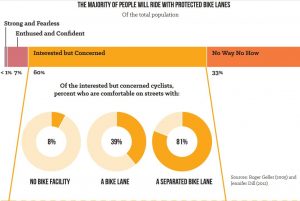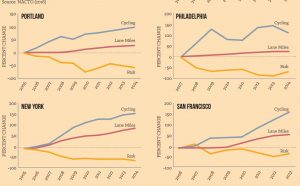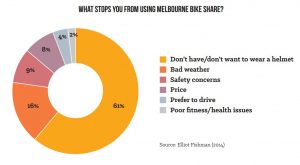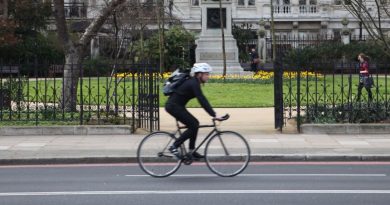Transport officials org research shows pairing bike share with safe infrastructure swells cyclist numbers
Research by the US National Association of City Transportation Officials has shown a clear link between both the proliferation of safe cycling infrastructure and bike share schemes as significantly impacting numbers cycling.
Sounds obvious right? Well there’s a lot more data that confirms age-old theories where that came from. In fact the study – titled Equitable Bike Share Means Building Better Places for People to Ride – is downloadable in three papers right here.
The association’s research re-affirms the widely held belief of safety in numbers, with  data from five of the seven US cities surveyed showing a decline in cyclists killed or seriously injured despite increased ridership. In the remaining two cities where incident levels didn’t come down the rate of KSI growth has slowed over time.
data from five of the seven US cities surveyed showing a decline in cyclists killed or seriously injured despite increased ridership. In the remaining two cities where incident levels didn’t come down the rate of KSI growth has slowed over time.
This decline in risk comes at the same time as bike ridership rates in the cities surveyed have more than doubled. All seven cities have invested in high-comfort bike facilities.
Infrastructure and usage
NACTO’s figures demonstrated a increased ridership rate ranging 21% through to 171% in cities across North America offering protected bike lanes.
In talking to the population, the researchers suggest that as much as 60% of people are “interested, but concerned” by cycling. Of that 60%, 80% of those would be willing to ride on the streets with a separation from motor traffic. 
In particular, recent national research suggests that that people of color are more likely than white Americans to say that adding protected bike lanes would make them ride more.
49% of the people who bike to work earn less than $25,000 per year, and Black and Hispanic bicyclists have a fatality rate 30% and 23% higher than white bicyclists, respectively. Building extensive protected bike lane networks benefits those who are most at risk.
“NACTO cities are leading the way on safety and this new analysis makes it clear why,” said Seleta Reynolds, General Manager of the Los Angeles Department of Transportation and NACTO President. “Each new facility we put down multiplies our investment in our city streets. High-quality bike lanes attract riders and are essential to increased safety for everyone.”
Bike Share 
We’ve written a lot on bike share lately, from user generated schemes to California opening up a tender for e-bike share and the NACTO study adds weight to the enormous benefits to be had when invested in.
In their research, NACTO focus in part on bike share’s role in safety in numbers. The association found that the risk of a bicyclist being struck by a motorist declines as the number of people biking increases. Therefore, the study concludes that appropriately scaled bike share systems can dramatically increase the total number of people on bikes in a city and help build political momentum for bike lanes.
“As we launched Biketown, we did so knowing that we have built a strong foundation for a successful system: a large network of high-quality bike lanes,” said Leah Treat, Commissioner of the Portland Bureau of Transportation. “Our safety record, like that of our peer cities, is the result of hard work and focus and the City of Portland is proud to be recognized as a leader.”
Mandatory Helmets 
In an offshoot from the main body of research, mandatory helmet laws are briefly touched on, pointing to well known cases – Sydney, Melbourne and Seattle – whereby ridership has declined with law enforcement.
This research did, however, demonstrate that across the U.S. these laws are disproportionately enforced against people of color, further discouraging them from riding.
“NACTO’s analysis confirms our experiences helping cities build protected bike lanes through our Green Lane Project,” said Martha Roskowski, Vice President of Local Innovation at PeopleForBikes. “People of all ages and abilities, genders, ethnicities, and incomes show up when cities create safe and comfortable places to ride. By connecting the dots between better infrastructure, bike share, safety, and better communities, NACTO has created a valuable resource for cities and supporters everywhere.”
NACTO is an association of 46 major North American cities formed to exchange transportation ideas, insights, and practices and cooperatively approach national transportation issues. It is also a member of the Better Bike Share Partnership, a JPB funded collaboration between The City of Philadelphia, Bicycle Coalition of Greater Philadelphia, NACTO, and PeopleForBikes, to build equitable and replicable bike share systems.
This article has now been added to our Cycling Advocacy Resource – a library of research from around the globe that should assist you in building a watertight case for developing cycling in your region.



